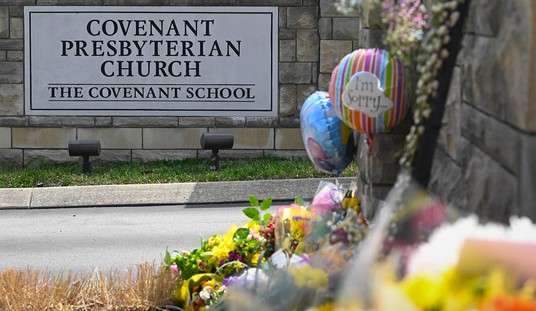The headline number from the BLS’s Establishment Survey was an addition of 115,000 jobs for the month of April. That is a terrible number for this far into the recovery, as it fails to keep up with population growth. At this time in the Reagan recovery, the economy added a population-adjusted 480,000 jobs. So why did the unemployment rate (U3 number) drop another 0.1% to 8.1%? Let’s delve through some of the data from the Household Survey:
- Size of civilian labor force: So why did the unemployment rate fall? Well, if you shrink the size of the pool, the unemployment rate will actually go down. While a net-115,000 jobs were added in November, the civilian labor force shrunk by 342,000. In March, the civilian labor force stood at 154.707 million. Now, there are only 154.365 million in the labor force. Moreover, the Civilian noninstitutional population grew by 180,000, yet there are now 522,000 more people not in the labor force than there were in October. Consequently, the labor participation number dropped from 63.8% to 63.6%. That is the lowest rate since 1981. This has caused the U3 rate to drop by .1%. The broader U6 number is unchanged at 14.5% – still amazingly high for this long after the official end of the recession.
- Duration of unemployment: The average (mean) duration of unemployment is 39.1 weeks, a record high. By comparison, the average duration was 19.9 weeks in January 2009.
- Comparison to January 2009– The size of the working age population grew over 8 million from 234.739 million at the time Obama was sworn in. Yet, the labor force has grown by just 130,000. The labor-participation rate has dropped 2.1%. Also, there are still 325,000 less people in raw numbers that hold jobs than there were at the time of his inauguration. Overall, there are almost 8 million more people not in the labor force relative to January 2009. So we have a larger population, a smaller workforce (resulting from discouraged workers), and more unemployed. As AEI’s James Pethokoukis points out, if the labor force was the same size as when Obama took office, the U3 rate would be 11.1%.

There will be those who will blame this all on the aging population, but the bottom line is that job creation is not keeping up with new population growth. Also, while there is a long-term trend of baby boomers retiring, the fact that there has been such a precipitous drop in the participation rate the past two years is reflective mainly of the weak economy. Here are the relevant charts from Zero Hedge. Don’t tell me that such a precipitous drop is due primarily to the long-term factor of aging. There is a reason why nobody on the street is feeling this recovery, even though the U3 number has dropped almost a full point over the past 6 months, and it has nothing to do with the aging population. It has everything to do with the anemic economy.
So this is the new normal in America. We will continue flat lining at (or near) the bottom of the employment trough indefinitely and more people will leave the workforce, even as the population continues to grow. Hey, maybe we can get the unemployment rate down to 4% like this.
Cross-posted from The Madison Project















Join the conversation as a VIP Member